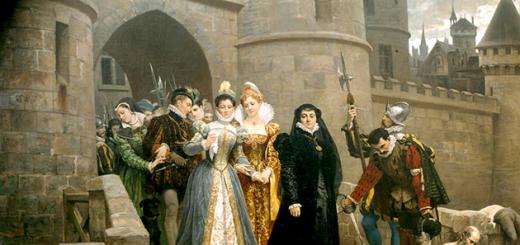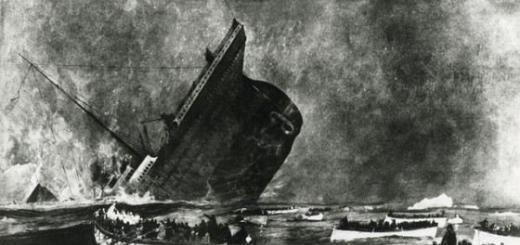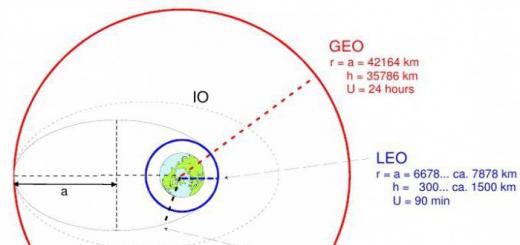In the east, the Vladimir lands bordered on another great principality of North-Eastern Russia - Nizhny Novgorod. This principality was formed as a result of the political action of the Horde. In 1341, Khan Uzbek transferred the territory of Nizhny Novgorod and Gorodets, which had hitherto been part of the Grand Duchy of Vladimir, to the Suzdal prince Konstantin Vasilyevich. As a result of this action of the Horde, the Grand Duchy of Vladimir was weakened, i.e. the princes of Moscow who ruled this principality and were gaining strength, since a large territory was leaving their control as the great princes of Vladimir. In addition, on the eastern outskirts of Russian lands, a new large public education, whose prince, relying on the support of the Mongol-Tatars and his own significant resources, could pursue a policy that was not consistent with the policy of the other Russian principalities. The action of the Horde thus prevented the development of centripetal tendencies in North-Eastern Russia.
In the 50s of the XIV century. The Nizhny Novgorod principality extended from the river. Nerl Klyazminskaya and its right tributary r. Irmes in the west to the river. Sura and its left tributaries of the Pyana and Kishi rivers in the east, from Unzha in the north to Sara (settlements in the middle reaches of the Sura river) in the south. It included such cities as Nizhny Novgorod, Suzdal, Gorodets, Gorokhovets, Berezhets and, probably, Unzha. However, this large area was inhabited and developed unevenly.
The most populated and cultivated was the ancient district of Suzdal. The famous Suzdal opolye included many ancient large villages within its borders, but the areas located only 25-30 km east and north of Suzdal were large forests with small and rare points of settlements. Apparently, the areas of the upper reaches of the Uvod, Teza, and Lukha rivers belonging to Suzdal were just as rarely populated. The rest of the territory of the principality remained underdeveloped. Even near Gorodets and Nizhny Novgorod by the middle of the XIV century. such a rural district as Suzdal had not yet formed. The villages of Gorodets did not stray far from the banks of the Volga even at a much later time 10 . And on the territory that belonged to Nizhny Novgorod, even in the 15th century. forests grew on an area of several hundred square kilometers 11 . However, the economic level of development of the cities themselves was quite high. This is especially true of Nizhny Novgorod, in the XIV century. turned into one of largest cities Of Eastern Europe. AT Nizhny Novgorod such complex and delicate medieval crafts as casting of bells, gilding on copper, and stone construction were developed. Nizhny Novgorod became the second city of North-Eastern Russia after Moscow, where in 1372 the construction of the walls of the stone Kremlin began. The city has grown into a major international shopping center, where even eastern merchants sailed with their goods 12 .
In political terms, by the end of the 50s of the XIV century. The Nizhny Novgorod principality was not completely unified. The first Nizhny Novgorod prince Konstantin Vasilyevich Suzdal, who ruled in the principality with absolute power and even made an attempt in 1354 after the death of Simeon the Proud to challenge Ivan the Red table of the Grand Duchy of Vladimir in the Horde 13 , died in 1355. 14 He divided the Nizhny Novgorod principality into parts among his sons - heirs. The eldest son of Konstantin Andrei received Nizhny Novgorod proper with the volosts related to it along the lower Oka and lower Klyazma, as well as along the river. Volga, mainly along the right tributaries of the latter. The second son of Konstantin, Dmitry-Foma, received the city of Suzdal and villages in the Suzdal opole. Perhaps he owned some land to the northeast of Suzdal. The third son of Konstantin Boris got Gorodets with its volosts located on both banks of the river. Volga from the lower reaches of the river. Unzhi to later Balakhna. Finally, the fourth son of Konstantin, also Dmitry, nicknamed the Nail, owned suburban Suzdal villages and lands along the lower reaches of the river. Take away and its right tributaries of the Vyazma and Ukhtoma rivers 15 .

To enlarge the image of the map, click on the map
Thus, in the second half of the 50s of the XIV century. The Nizhny Novgorod principality was divided into four parts according to the number of owners - the heirs of Prince Konstantin. The beginning of the feudal fragmentation of the Nizhny Novgorod territory has not yet led to the political isolation of local destinies, but, apparently, to a general political position Nizhny Novgorod princes had a certain influence. In any case, the Nizhny Novgorod prince Andrei Konstantinovich was forced to conclude in 1356 with the Moscow prince Ivan Krasny, who occupied the Vladimir table, an agreement, according to which he recognized himself as the "young brother" of the Grand Duke, i.e. formally agreed to regard the latter as his overlord 16 .



COMMENTS
Nasonov A.N. Mongols and Russia. M.; L., 1940, p. 97-98.
PSRL, vol. XV, no. 1, stb. 64.
Same place, stb. 72.
Same place, stb. 54.
NPL, p. 477; ASVR. M., 1958, vol. II, No. 435, p. 479.
PSRL, vol. XV, no. 1, stb. 78; NPL, p. 477.
The city of Unzha was first mentioned in the 13th century. (PSRL. M.; L., 1949, vol. XXV, p. 116). At the beginning of the XV century. the Unzhin tamga is mentioned, which was collected by the prince who owned Gorodets (DDG, No. 86, p. 43; cf.: NPL, p. 477). The cities of Gorokhovets, Berezhets and Unzha are mentioned in the famous list "And these are the names of all Russian cities, distant and near" (NPL, p. 477), compiled around 1394-1396. (Naumov E.P. On the history of the annalistic "List of Russian cities near and far". - In the book: Chronicles and Chronicles: Collection of articles, 1973, M., 1974, p. 157, 163).
Welcome!
you are located in home page Encyclopedia of Nizhny Novgorod- the central reference resource of the region, published with the support of public organizations of Nizhny Novgorod.
At the moment, the Encyclopedia is a description of regional life and the surrounding outside world from the point of view of the Nizhny Novgorod people themselves. Here you can freely publish informational, commercial and personal nature, create convenient links of the form and contribute your opinion to most of the existing texts. The editors of the Encyclopedia pay special attention to authoritative sources - messages from influential, informed and successful Nizhny Novgorod people.
We invite you to enter more Nizhny Novgorod information into the Encyclopedia, to become an expert, and, possibly, one of the administrators.
Principles of the Encyclopedia:
2. Unlike Wikipedia, the Nizhny Novgorod Encyclopedia may contain information and an article about any, even the smallest, Nizhny Novgorod phenomenon. In addition, science, neutrality, and the like are not required.
3. Simplicity of presentation and natural human language is the basis of our style and is highly appreciated when helping to convey the truth. Encyclopedia articles are designed to be understandable and useful.
4. Different and mutually exclusive points of view are allowed. You can create different articles about the same phenomenon. For example - the state of affairs on paper, in reality, in popular presentation, from the point of view of a certain group of people.
5. The reasoned folk word always takes precedence over the administrative-clerical style.
Read the basics
We invite you to write articles - about the Nizhny Novgorod phenomena in which you, in your opinion, understand.
Project Status
The Nizhny Novgorod Encyclopedia is a completely independent project. ENN is funded and supported exclusively by individuals and developed by activists, on a non-profit basis.
Official contacts
Non-profit organization " open Nizhny Novgorod Encyclopedia » (self-proclaimed organization)
Nizhny Novgorod Principality- state formation in the North-East of Russia at the confluence of the Oka into the Volga and the adjacent territories of the Volga-Klyazma interfluve and the Middle Volga region; in 1341-1392 - a great principality.
Spassky Cathedral in Nizhny Novgorod. 14th c.
The indigenous population of the territory of the Nizhny Novgorod principality were the Finno-Ugric tribes - Merya, Mordovians, etc. Active Slavic-Russian colonization of the Nizhny Novgorod Volga region occurred with the strengthening of the Vladimir-Suzdal principality (12th century - 1st third of the 13th century). In the course of the struggle with the Volga Bulgaria, the Mordovian lands on the right bank of the Volga, which were under the control of the Bulgars, gradually retreated to the sphere of influence of the Russian princes. In 1220, in Gorodets Radilov, the Grand Duke of Vladimir Yuri Vsevolodovich and the Bulgars concluded a peace agreement, one of the conditions of which, apparently, was the renunciation of the Bulgar princes from claims to the Mordovian territories.
In 1221, the fortified city of Nizhny Novgorod was founded at the mouth of the Oka, which became an important outpost of Russian princes in the Volga lands. In the 1220s - early 1230s. a number of campaigns were made against the Mordovians (on Purgas Russia, etc.). Reciprocal military actions were taken by the Mordovian prince Purgaz, who besieged Nizhny Novgorod. The Mongol invasion slowed down, but did not stop the advance of the Russian princes in the Middle Volga region. Since 1238, the Nizhny Novgorod lands became part of the separated Suzdal Principality, from the last third of the 13th c. - Gorodetsky (from about 1311 - the center in Nizhny Novgorod).
In 1341, the Nizhny Novgorod Grand Duchy was formed, which included Nizhny Novgorod, Suzdal, Gorodets, Gorokhovets. The Nizhny Novgorod principality was one of the major political, economic and cultural centers Northeast Russia. Handicrafts (foundry, jewellery, pottery, etc.) and trade have been greatly developed here. Nizhny Novgorod trade was visited by merchants from eastern countries. Under Prince Konstantin Vasilievich (1341-1355), his chronicle writing began; in 1347 the Suzdal diocese was established; from 1374 they began to build stone kremlin; coins were minted in the capital and centers of destinies. With the expansion of the territory of the Nizhny Novgorod principality, the Mordovian places on the right bank of the Volga and the Surye were developed. Prince Konstantin Vasilyevich ordered the Russian people to settle "along the Oka, and along the Volga, and along the Kudma (Kudma), and in the Mordovian settlements wherever anyone wants" (Nizhny Novgorod chronicler, Nizhny Novgorod, 1886, p. 2-3).
In the 1360-1370s. Nizhny Novgorod merchant T. Petrov bought from Prince Muranchik (probably a Mordovian feudal lord) several villages on the river. Sundoviti (Sundovik). By that time, the Nizhny Novgorod Principality included the Mordovian territories of the right bank of the Volga, the Lower Surya, including Mezhpyanye, Zapyanye and the lower reaches of Alatyr. The Nizhny Novgorod lands were repeatedly raided by the Horde Tatars. In 1361, Sekiz-bey, a native of the Horde, “Zapianie robbed everything, and broke off with a moat, that gray” (PSRL, M., 2000, vol. 15, st. 71). To protect the border lands in 1372, the Russian fortress Kurmysh was founded on the left bank of the Sura.
In 1375, Zapyane was again invaded by the Mongol-Tatars; in 1377, Mordovian princes also took part in the raid on Nizhny Novgorod. In 1392, the Moscow prince Vasily I Dmitrievich received a label in the Horde for the rule of Nizhny Novgorod, which deprived the Nizhny Novgorod principality of political and economic independence. One of the opponents of subjugation to Moscow, Prince Semyon Dmitrievich, sought support from the Horde khans and, apparently, stayed in the Middle Surye for some time. According to Russian chronicles, in 1401 the Moscow governors Ivan Uda and Fyodor Glebovich with an army passed through the Mordovian lands and in a place called Tsibirtsa (they believe, on the Cheberchinka River, the left tributary of the Sura), they captured Princess Alexandra, the wife of Semyon Dmitrievich.
In 1408, Nizhny Novgorod and Gorodets were ravaged by one of the detachments of the Horde temnik Edigei. Bulgars and Mordovians participated in this raid. On the way back to the Surye, the Tatars burned Kurmysh and Velikaya Sara (presumably on the site of the modern village of Sara, Sursky district, Ulyanovsk region). The concealment at the beginning of 1409 is associated with these events. a large number coins from
V.E. Shmatov
Suzdal-Nizhny Novgorod Grand Dukes and their genealogy
PartI
In historical literature, it is customary to consider the beginning of the formation of the specific Suzdal principality in 1238, when, after the death of the Grand Duke of Vladimir Yuri Vsevolodovich, in a battle with the troops of Khan Batu, he became the Grand Duke native brother Yaroslav Vsevolodovich.
By that time, of the eight sons of Vsevolod Yurievich, the Grand Duke of Vladimir, who died in 1212, only three remained: Yaroslav, Svyatoslav and Ivan. The eldest of them, Yaroslav, having become the Grand Duke of Vladimir in 1238, allocated from the Grand Duke's lands appanages to his brothers, separate principalities: Svyatoslav - Suzdal, with the main city of the principality Suzdal; Ivan - Starodubskoye, with the main city of the principality Starodub on the Klyazma.
After the death of Yaroslav Vsevolodovich in 1246 in the capital of the Mongol-Tatar empire, Karakorum ( Russian name- Kanovichi), his brother Svyatoslav Vsevolodovich became the Grand Duke of Vladimir "by eldership". Suzdal a short time passed to the son of Yaroslav Vsevolodovich, Andrei Yaroslavovich. But already in 1249, having returned with "great honor and award" from Karakorum, Andrei Yaroslavovich became, again for a short time, until 1252, the Grand Duke of Vladimir. It is not known from chronicle sources who was the prince of Suzdal from the moment Andrei Yaroslavovich owned the Grand Duchy of Vladimir until his return in 1256-1257 from an escape to Sweden. But it is known that upon his return, Andrei Yaroslavovich again becomes the Prince of Suzdal, until his death in 1265. From that time on, the descendants of Andrei Yaroslavovich became the princes of Suzdal by right of inheritance.
Having occupied the Vladimir grand-ducal table in 1252, Alexander Yaroslavovich placed his son Vasily on the reign of Novgorod, who in 1255 was forcibly removed by Alexander's brother, Yaroslav Yaroslavovich of Tverskoy. Having expelled Yaroslav from the princely table in 1256, Alexander Yaroslavovich again installed his son Vasily to reign in Veliky Novgorod. But Vasily did not live up to his father's hopes. When in 1257 the Horde scribes came to copy Novgorod lands, the Novgorodians opposed this and Prince Vasily took the side of the Novgorodians. The Horde tsar instructed Alexander Yaroslavovich, as the Grand Duke of the Russian land, to appease the Novgorodians. Knowing that Grand Duke together with the ambassadors of the Horde Tsar goes to Veliky Novgorod, Prince Vasily fled to Pskov. “And the Grand Duke Alexander drove his son out of Pskov and the ambassador to the Niz.”1 This is the last mention in the annals of the son of Alexander Nevsky Vasily, not counting the message about his death in 1271: “In the summer of 6779 (1271). The faithful prince Vasily, the son of the Grand Duke Alexander, reposed. 2
Historians and researchers do not have a common opinion on the interpretation of the annalistic message: "... and the ambassador to the Bottom." Some believed that Alexander sent his son to the Suzdal lands. But the Suzdal principality at that time was owned by Alexander's brother, Andrei. Others identified him with Prince Vasily Kostroma. Yes, in those years, Vasily was the prince of Kostroma, but not the son, but the brother of Alexander Yaroslavovich. And in the year of the death in 1271 of Vasily Alexandrovich, his nephew, Vasily Yaroslavovich was still alive and even took the grand prince's table in Vladimir after the death of his other brother, Yaroslav Yaroslavovich. It would be logical to assume that Alexander Nevsky sent his son Vasily "for correction" either to Gorodets or Nizhny Novgorod. Most likely, in Nizhny, since the city began to have great importance at that time, as the final point on the way from the Russian lands to the Horde, while also having great strategic importance as a border town located at the confluence of two trade rivers - the Volga and the Oka. Alexander Yaroslavovich understood that, due to the importance of the location, Nizhny Novgorod had to be rebuilt and strengthened. Gorodets, by this time, was a hundred years old and, according to those concepts, it was already an established, mature city.
If, nevertheless, the mentioned message is connected with Nizhny Novgorod, then the conclusion suggests itself that Vasily Alexandrovich reigned in Nizhny Novgorod, and maybe at the same time in Gorodets, from expulsion until his death, i.e. within 13-14 years, during which a lot could be done to equip these cities. The importance of the chronicle under discussion is also in the fact that since Alexander Yaroslavovich "... sent his son Vasily to the Niz", it means that the Nizovsky lands at that time were part of the Vladimir grand-princely lands, and Nizhny Novgorod and Gorodets were not suburbs of the Suzdal principality.
In the Sofia First Chronicle of the older version, there are several interesting messages about Alexander Nevsky's trips "to the Bottom". There is one message about the trip of Alexander Yaroslavovich to the Nizovsky lands and in the Laurentian Chronicle.4
Chronologically, the above messages line up as follows. In 1256, Alexander Yaroslavovich was in the Nizovsky lands, i.e. in Gorodets or Nizhny Novgorod, or both. At a time when he was at the "bottom", the Novgorodians turn to him for help in order to go to war against the Swedes and the coastal peoples. Alexander collects regiments in the Nizovsky lands and goes to the aid of the Novgorodians. Having won a victory over the Swedes and their allies, Alexander returns to Veliky Novgorod, deposes Prince Yaroslav and again puts his son Vasily to reign in Veliky Novgorod. Himself, judging by the message in the Laurentian Chronicle, with two ambassadors from Veliky Novgorod returns "to the Bottom", namely to Gorodets and Nizhny Novgorod. Prince Boris Vasilyevich Rostovsky is also traveling with him. Having sent Prince Boris, Novgorod ambassadors and his gifts (perhaps this was a "way out") to the Horde Tsar,5 Alexander Yaroslavovich himself remains in his suburbs, solving some important issues, most likely, on the arrangement of Nizhny Novgorod. In 1257, Alexander, having met the Novgorod ambassadors and ambassadors from the Horde tsar who had come from the Horde, returned with the Horde ambassadors to Veliky Novgorod. At the same time, he leaves the Novgorod ambassadors Olfery and Mikhail Pinyashchinich (Pinyashchina - in the Resurrection Chronicle) "on the Bottom", probably to supervise the work to strengthen Nizhny Novgorod. Having dealt with the Novgorodians in Veliky Novgorod about their refusal of the Tatar census, Alexander expels his son Vasily from reigning in Pskov and sends him "to the Niz", where Vasily is met by Olfery and Mikhail Pinyashchinich, representatives of the Novgorod nobility who are well known to him from Veliky Novgorod. It can be assumed that from that time until his death in 1271, Vasily reigned "on the Niza", engaged in the arrangement of the Nizov cities. Therefore, with a high degree of probability, we can assume that in the period from 1257 to 1271, the son of the great Alexander Nevsky, Prince Vasily, was the prince of Gorodetsky and Nizhny Novgorod, but, most likely, as a governor, and not a specific prince. In chronicles and genealogical books it is not noted whether Vasily Alexandrovich had children.
Another son of Alexander Nevsky, Andrei Alexandrovich, was first mentioned in chronicles in 1277 in connection with the visit of the Horde by the Russian princes and their joint military campaign along with the Horde Tsar Mentu-Temir to the Yasy.6 In the Nikon chronicle, Prince Andrei Alexandrovich is mentioned as Gorodetsky, starting from 1283 until his death in 1304. Whether Gorodets was allocated to him as an inheritance by his brother, the Grand Duke of Vladimir Dmitry Alexandrovich, or he was the Gorodetsky prince only as a governor until the death of Dmitry Alexandrovich in 1294, one can only guess about this, since there is no information about this in the chronicles . Under Ivan Danilovich Kalita, the Grand Duke of Moscow and Vladimir (the years of the great reign from 1328 to 1341), until 1341 Nizhny Novgorod (possibly Gorodets) was owned by his son, Prince Simeon the Proud, but, again, as a governor, and not specific prince.
It should be noted here that, according to the author's analysis of the known chronicles, the Nizovsky lands, together with Gorodets and Nizhny Novgorod, until 1305 were part of the Grand Duchy of Vladimir. In 1305, during the division of the grand-princely Vladimir lands by the Horde tsar Takhta, the grand-ducal table in Vladimir was given "by eldership" to Prince Mikhail Yaroslavovich of Tver, the grandson of the Grand Duke of Vladimir Yaroslav Vsevolodovich. And Nizhny Novgorod, most likely Gorodets, the Tsar of the Horde gave to another grandson of Grand Duke Yaroslav Vsevolodovich, Mikhail Andreevich of Suzdal,7 who after his death passed to his son, Prince Vasily Mikhailovich of Suzdal. After the death of Vasily Mikhailovich in 1309, the struggle for the Nizovsky cities began between the Tver and Moscow princes, since the young Suzdal princes at that time, Alexander and Konstantin Vasilyevich, could not keep the Nizovsky lands as part of the Suzdal principality. As a result of this struggle, Prince Yuri Danilovich of Moscow took possession of Nizhny Novgorod, against whom in 1311 the young Tver prince Dmitry Mikhailovich, 8 the son of the Grand Duke of Vladimir Mikhail Yaroslavovich, spoke out. It is likely that until 1313 the Nizovsky lands were under the rule of Prince Yuri Danilovich of Moscow. But in 1313 the Horde king Takhta died. The new king Ozbyak (Uzbek) restored the "status quo" that had existed for many years9 and returned the Nizovsky lands back to the Grand Duchy of Vladimir.10 In 1341, the Nizovsky lands, together with Gorodets and Nizhny Novgorod, were given by the Horde Tsar Ozbyak to the Suzdal prince Konstantin Vasilyevich.11 When analyzing chronicles, a certain trend can be traced: whoever owned the Grand Duchy of Vladimir, he also owned the Nizovsky lands with the suburbs of Gorodets and Nizhny Novgorod, with the exception of the above cases and the period from 1216 to 1218, when Prince Yuri Vsevolodovich, son of the Grand Duke, owned Gorodets as an inheritance Vladimirsky Vsevolod Yurievich.
Let us now consider how various historians and researchers interpret the genealogy of the Suzdal-Nizhny Novgorod Grand Dukes. Opinions are divided here. Some are descended from Grand Duke Andrei Alexandrovich, son of Alexander Nevsky, others from Suzdal Prince Andrei Yaroslavovich, brother of Alexander Nevsky, while offering their own versions. Based on the analysis of information in the chronicles existing today, the author came to the conclusion that the genealogy of the Suzdal-Nizhny Novgorod Grand Dukes is most fully reflected in the article reports of the Nikon Chronicle.12
According to the Nikon chronicle, the genealogy of the Suzdal-Nizhny Novgorod Grand Dukes, according to the articles before 1365, is as follows: Andrei Yaroslavovich of Suzdal, son of the Grand Duke of Vladimir; Yuri Andreevich, son of Andrei Yaroslavovich; Mikhail Andreevich, son of Andrei Yaroslavovich; Vasily Mikhailovich, son of Mikhail Andreevich; Alexander Vasilyevich, son of Vasily Mikhailovich; Konstantin Vasilyevich, son of Vasily Mikhailovich; Andrei Konstantinovich, son of Konstantin Vasilyevich. But here is how the death of Andrei Konstantinovich is reported in an article of 1365: “The same summer (6873-1365) the meek and quiet and humble and many-virtuous Grand Duke Andrei Konstantinovich of Suzdal and Novogorod Nizhnyago and Gorodetsky, grandson Vasilyev, great-grandson Mikhailov, great-great-grandson Andreev, reposed, great-great-grandson Alexandrov, great-great-grandson Yaroslavl, great-great-great-grandson Vsevolozh ... "13
Undoubtedly, there is a clear and gross error in this chronicle message. Contrary to all previous genealogical reports, starting from 1264, which are given in the news of the death of Andrei Yaroslavovich and his sons Yuri and Mikhail, the chronicler (or editor) of the Nikon Chronicle decided, after 100 years, to change the genealogy of the Suzdal-Nizhny Novgorod Grand Dukes and reckon its beginning , without any reason, to Andrei Alexandrovich.
It should be noted that the genealogy of the Suzdal-Nizhny Novgorod Grand Dukes can be traced most consistently only in the Nikon Chronicle. In other chronicles, there are only separate references to the Suzdal-Nizhny Novgorod grand dukes. However, in the reports of all chronicles it is clearly seen that the second Suzdal prince after Andrei Yaroslavovich was his son Yuri.14 The third Suzdal prince was Yuri's brother, Mikhail Andreevich, i. also the grandson of Yaroslav, not Alexander.15 Information about the presence of Prince Mikhail Andreevich at that time is also confirmed by other chronicles in connection with the beating of the eternals in Nizhny Novgorod in 1305. In addition to the Nikon Chronicle, there are reports of this in the Chronicle of Abraham, the Novgorod Fourth Chronicle, the Sofia First Chronicle of the older version, the Moscow chronicle end of the 15th century.16
As mentioned earlier, the news about Vasily Mikhailovich of Suzdal is only in the Nikon Chronicle in connection with his death in 1309.17 Since further the princes of Suzdal "Vasilyevich" are mentioned in the annals - first Alexander Vasilyevich in 1327, 1329 and 1332 (the year of his death ), then Konstantin Vasilyevich in 1339, 1340, 1341, 1343, 1350, 1352, 1353 and 1355 (the year of his death), then it can be said with certainty that Vasily Mikhailovich was the son of Prince Mikhail Andreevich, and Alexander and Konstantin were the sons of Vasily Mikhailovich. And there is no "mystery" in Prince Vasily Mikhailovich of Suzdal, as some researchers write18. There is also no tendency of the editors of the Nikon Chronicle to “consistently elevate the Suzdal Rurikovich to Andrei Alexandrovich.”19 One can only see the desire of the editors of the Nikon Chronicle, for some reason, to take and alter the genealogy of the Suzdal-Nizhny Novgorod Grand Dukes, raising it in 1365 to the Grand Duke Andrei Alexandrovich. At the same time, in the Nikon Chronicle, before the article of 1365, there are three genealogical brothers of Andrei Konstantinovich, Dmitry. Two of them are for 1362 (X volume PSRL) and one for 1363 (XI volume PSRL). All three genealogies end with his great-great-grandfather Andrei20. But already after the description in the annals of the genealogy of Andrei Konstantinovich in the year of his death in 1365 (XI volume PSRL), similar genealogies appear, like Andrei Konstantinovich, his brothers Dmitry Konstantinovich in 1365 and 1370, and Boris Konstantinovich in 1365 . Attention is also drawn to the fact that the appearance of a new pedigree in all three brothers, coming from Grand Duke Andrei Alexandrovich, refers to the same year - 1365. And only once, as if for reinforcement, is another such genealogy from Dmitry Konstantinovich in 1370. And that's it. In the future, the genealogies of Dmitry and Boris Konstantinovich are presented without mentioning their great-great-grandfather Andrei.
Based on the foregoing, it can be concluded in the first part that the genealogy of the Suzdal-Nizhny Novgorod Grand Dukes, mentioned in the Nikon Chronicle in the reports of the article for 1365, is unreliable, and it should be rejected. The reliable genealogy of the Suzdal-Nizhny Novgorod Grand Dukes comes from Prince Andrei Yaroslavovich of Suzdal. And one of the proofs of this is the work compiled by the author of this article. family tree Grand Duke Yaroslav Vsevolodovich, or rather, a comparison of the generational painting of the branch of the Suzdal-Nizhny Novgorod Grand Dukes (highlighted in black) with other branches of the family tree.
Notes.
1 PSRL, M., L., 1949. T. XXV. S. 143.
2 Ibid. S. 150.
3 1) “In the summer of 6764 (1256) ... Then I don’t exist for the prince in Novgorod.
Novgorodtsy sent to the Niz to the Grand Duke for regiments ... ”;
2) “Then (6764-1256) Grand Duke Alexander went to the Bottom,
ambassadors of Novgorod Olfery and Mikhail Pinyashchinich, and his son
Prince Vasily planted in Novgorod on the table "; 3) "In summer 6765
(1257) ... And the Grand Duke Alexander drove his son out of Pskov and the ambassador
in Bottom "; 4) “In the summer of 6767 (1259) ... The same autumn, Mikhailo arrived
Pinyaschinich from Nizu. PSRL, M., 2000. T. VI. Issue 1. S. 333, 334, 335.
4 "In the summer of 6764 (1256). The princes went to Gorodets and Novgorod. Prince
Boris went to the Tatars. And Prince Alexander sent gifts ... ". PSRL,
M., 1997. T. I. S. 474.
5 Exit - the annual tribute that the Russian princes collected for
Horde king.
6 PSRL, M., 2001. T. VII. S. 176.
7 Mikhail Andreevich strengthened his position among the Russian princes,
having married in the same 1305 (in 1306, according to the news in the annals
Avraamka) on Ordynka: “The same summer (6814-1306) the prince married
Mikhailo Andreevich in the horde ... ". PSRL, M., 2000. T. XVI. P.58.
8 "In the summer of 6819 (1311) ... Prince Dmitry Mikhailovich Tfersky collected
howling many want to go to Novgorod Nizhnei army and Prince Yury, and not
bless him Peter the Metropolitan ... "- PSRL, M., L., 1949. T. XXV.
9 The status quo is the political, political,
legal or other provision - SES, M., 1984. S.1263.
10 This can be judged from the annalistic news, when in 1315
Grand Duke Vladimir Mikhail Yaroslavovich went to Novgorodtsev
and to Torzhok: “In the summer of 6823 (1315) ... Go then, Prince Mikhailo Tfersky
to Torzhok with all the strength of Nizovskaya and from the Tatars. PSRL, M., L., 1949.
11 “The same summer (6849-1341) sitting in Novgorod in Nizhny on Gorodets on
reigning in the great Kostyantin Vasilyevich Suzhdalsky. ”And further:
“In the summer of 6851 (1343), the great prince Semyon Ivanovich got into trouble with the prince
Kostyantin Vasilyevich Suzhdalsky on the reign of Novagod
Nizhnyago and went to the Horde and went to the boyars of Novgorod and Gorodech
for Prince Semyon Ivanovich, and go with him to the Horde. And be im
in the Horde, the court is strong and the reign of Novogorodskoye went to the prince
Kostyantin and giving him the boyars, and bring the bysh to Novgorod in
homolstekh and their estate took, and samekh commanded to be executed by bargaining leading.
PSRL, Petrograd, 1922. T. XV. S.54, 55.
12 Although the authenticity of some messages from the Nikon chronicle and
raises doubts among a number of researchers, but they themselves are forced to
turn to them to substantiate their versions when there are no others, more
reliable, in their opinion, sources.
13 PSRL, M., 1965. T. X. S. 175.
Andreevich in 1279 is reported as follows: “The same summer (6787-1279)
repose great prince Yury Suzhdalsky, son of Andreev
Yaroslavich ... ". It is clearly stated here that Yuri is the grandson of Yaroslav
Vsevolodovich. PSRL, M., L., 1949. T. XXV. P.152.
15 “The same summer (6787-1279) reposed Prince Yury Andreevich
Suzdal, grandson of Yaroslavl, great-grandson of Vsevolozh, great-great-grandson of Yuri
Dolgoruky ... And by him sit his brother in the great reign in Suzdal
Prince Mikhail Andreevich. PSRL, M., 1965. T. X, S. 156.
16 PSRL, M., 2000. T. XVI. S. 58; PSRL, M., 2000. T. IV. S. 253; PSRL, M.,
2000. Vol. VI. Issue 1. P.368; PSRL, M., L., 1949. T. XXV. S. 393.
17 "The same summer (6817-1309) Prince Vasily Mikhailovich reposed
Suzdal. PSRL, M., 1965. T. Kh. S. 177.
18 Pudalov B.M .. Russian lands of the middle Volga region (second third of the XIII -
first third of the 14th century). N.Novgorod, 2004. P.226.
20 PSRL, M., 1965. T. Kh. S. 233, 234.
Abbreviations.
PSRL– complete collection Russian chronicles
SES - Soviet Encyclopedic Dictionary
The scheme of the genealogical tree of the Grand Duke Yaroslav Vsevolodovich is in










